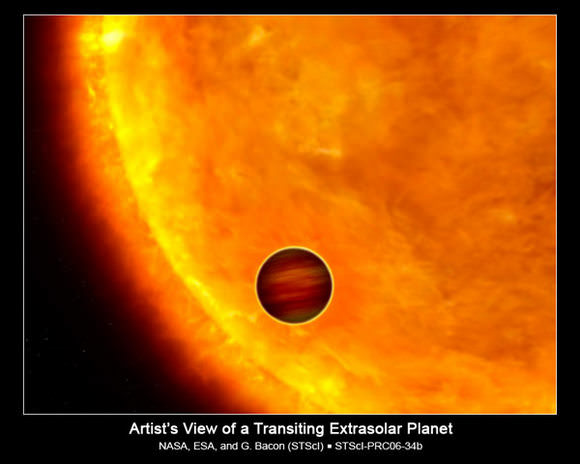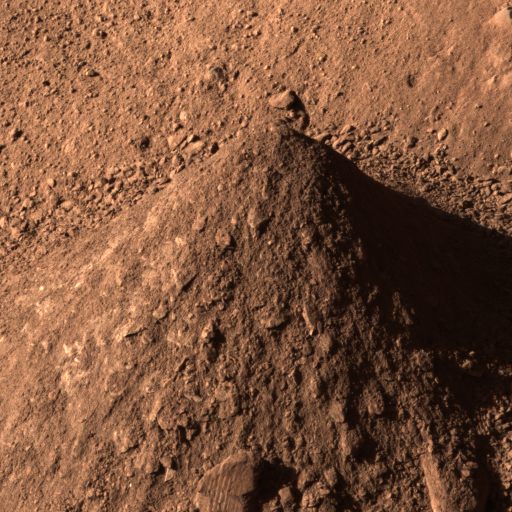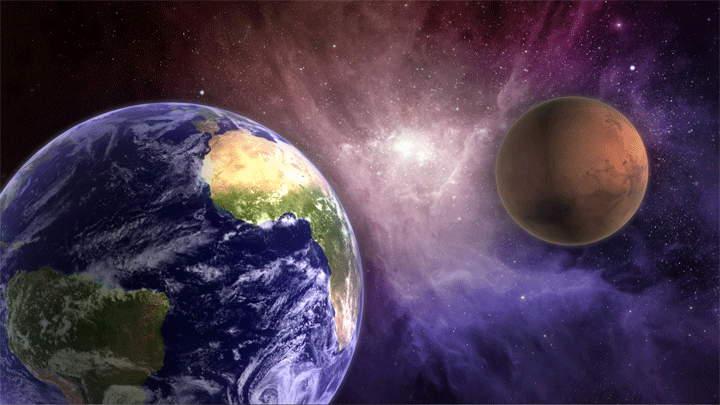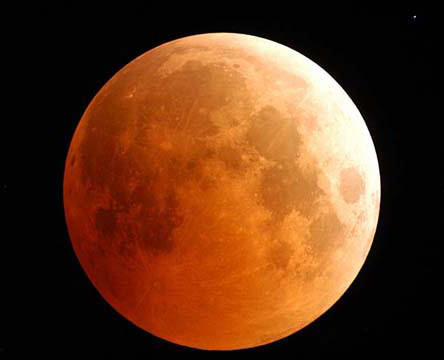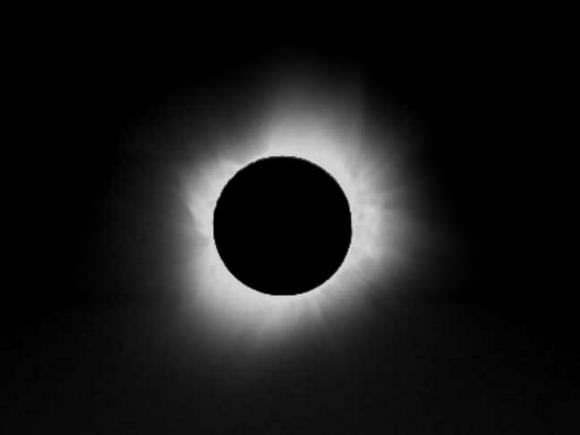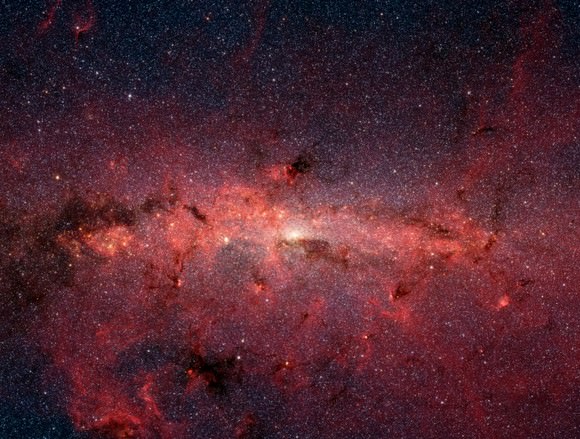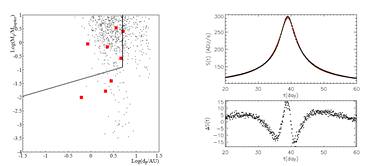[/caption]
When it comes to the role of magnetism in the formation of stars, size might not matter.
A team of researchers led by Josep Girart, of the Institut de Ciències de l’Espai (in Spain), studied the slow evolution of a dust cloud into a massive star, and realized that the cloud’s magnetic field controls the star’s development more than any other factor. They propose that the story is the same for small stars — an idea that could offer a new way to understand the formation of the early universe.
The new hypothesis is presented in this week’s issue of the journal Science, and the lead image represents an artist’s rendering of the concept.
The background shows a false-color Spitzer image of the massive star-forming region G31.41, with the colors indicating various wavelengths of light. The zoom-in region represents the dust emission from the massive hot core (color and contour image) superposed with bars showing the structure of the magnetic field.
Pictured in the bottom of the image is the Submillimeter Array in Hawaii, which was used for the observations.
The authors describe how the magnetic field at G31.41 has deformed the dust cloud into an hourglass shape – a telltale sign of magnetically controlled star formation.
They say that this magnetic energy dominates over the other energies at play — e.g., centrifugal force and turbulence — and suggest that the role of the magnetic field in the early stages of star formation could be very similar for both small and massive stars.
“The energetic relations do not differ too much” between massive and small stars, the authors write. “Both cores are collapsing because gravity has overcome pressure forces, but the collapsing dynamics are controlled by the magnetic energy rather than by turbulence.”
Girart and his colleagues point out that this only holds true for forming stars; older massive stars are more influenced by radiation and ionization pressure, turbulence, and outflows than by magnetic fields.
Massive stars play a crucial role in the production of heavy elements and in the evolution of the interstellar medium, so this discovery might eventually lead to new insights about the formation of the early universe.
Source: Science


